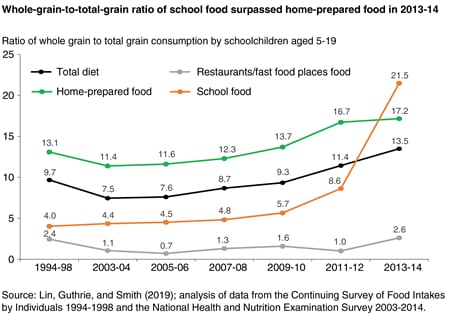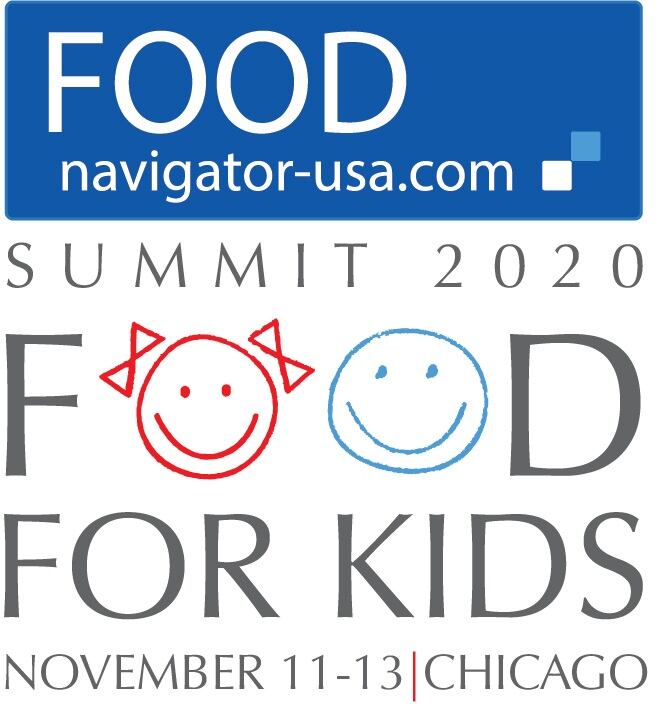In 2005, the Dietary Guidelines for Americans made the recommendation that half of grains intake should be from whole grains (e.g. oats, sorghum, buckwheat, quinoa).
Following the recommendation, in the 2012–2013 school year, USDA nutrition standards began to require that half of all grain products served to the 30 million children who participate in the National School Lunch Program be whole-grain-rich (i.e. contain 50% to 100%) percent whole grain. Breakfasts offered through USDA’s School Breakfast Program, which serves 14 million children, were required to meet this standard by the 2013–2014 school year, while grain products sold outside the USDA meal programs (snacks, etc.) were required to be whole-grain-rich by the 2014-15 school year.
(In a final rule released in late 2018, the Trump administration relaxed the requirements such that the 'wholegrain-rich' criteria only apply to half the grains served, meaning schools are now only required to make a minimum of 25% of their grains whole.)
According to the study conducted by USDA ERS and University of Georgia researchers, the ratio of whole grains to total grains from all sources fell from 9.67% (1994–1998) to 7.6% (2005–2006) before climbing to 13.48% (2013–2014), according to USDA ERS data.
"During 1994–2006, the whole grain/total grain ratio of schoolchildren's diets declined, contrary to expert advice. Following the 2012 US Department of Agriculture school meal regulations, both the propensity and the intensity of whole grain consumption from school rose considerably, demonstrating the important role school meals may play in improving children's diets," noted researchers of the study.
Among those consuming school foods, consumption of whole grain foods increased from one in four (in the 2011-2012 school year) to one in two students in 2013-2014 consuming whole grains.
Whole grain consumption at school vs. at home
Researchers analyzed federally collected, nationally representative food consumption data (from 1994 through 2014) of 17,106 school-aged children who were attending school at the time of the survey.
What they found was that prior to 2013 home-prepared foods had a higher whole-grain-to-total-grain ratio than foods from schools, as well as restaurants and fast food establishments. But in 2013–14, the whole-grain-to-total-grain ratio of school foods surpassed other sources, including home-prepared foods.
"School children’s whole grain consumption could have increased either because more of them ate whole grains or because those who chose to eat whole grains ate larger amounts," noted the researchers and lead authors of the study, Biing-Hwan Lin, PhD, and Joanne F. Guthrie, PhD.
According to researchers, the sharp increase in whole grain consumption from 2011–12 to 2013–14 was primarily due to increased numbers of students consuming whole grains from school foods. In 2011 to 2012, 23% of students chose to eat school food that contained whole grains, whereas almost half (49%) did so in the 2013-2014 school year.

"Although this type of analysis of survey data did not allow the researchers to establish a cause-and-effect relationship between a change in school meal standards and improvement in whole grain intakes, these results suggest an association between the whole grain standards for school meals and higher whole grain consumption by schoolchildren," commented Dr. Lin and Dr. Guthrie.
"Research has shown that repeated exposure to a food, such as whole grain products served in schools, increases an individual’s preference for it, which may raise whole grain consumption by children outside of school and in later years."





